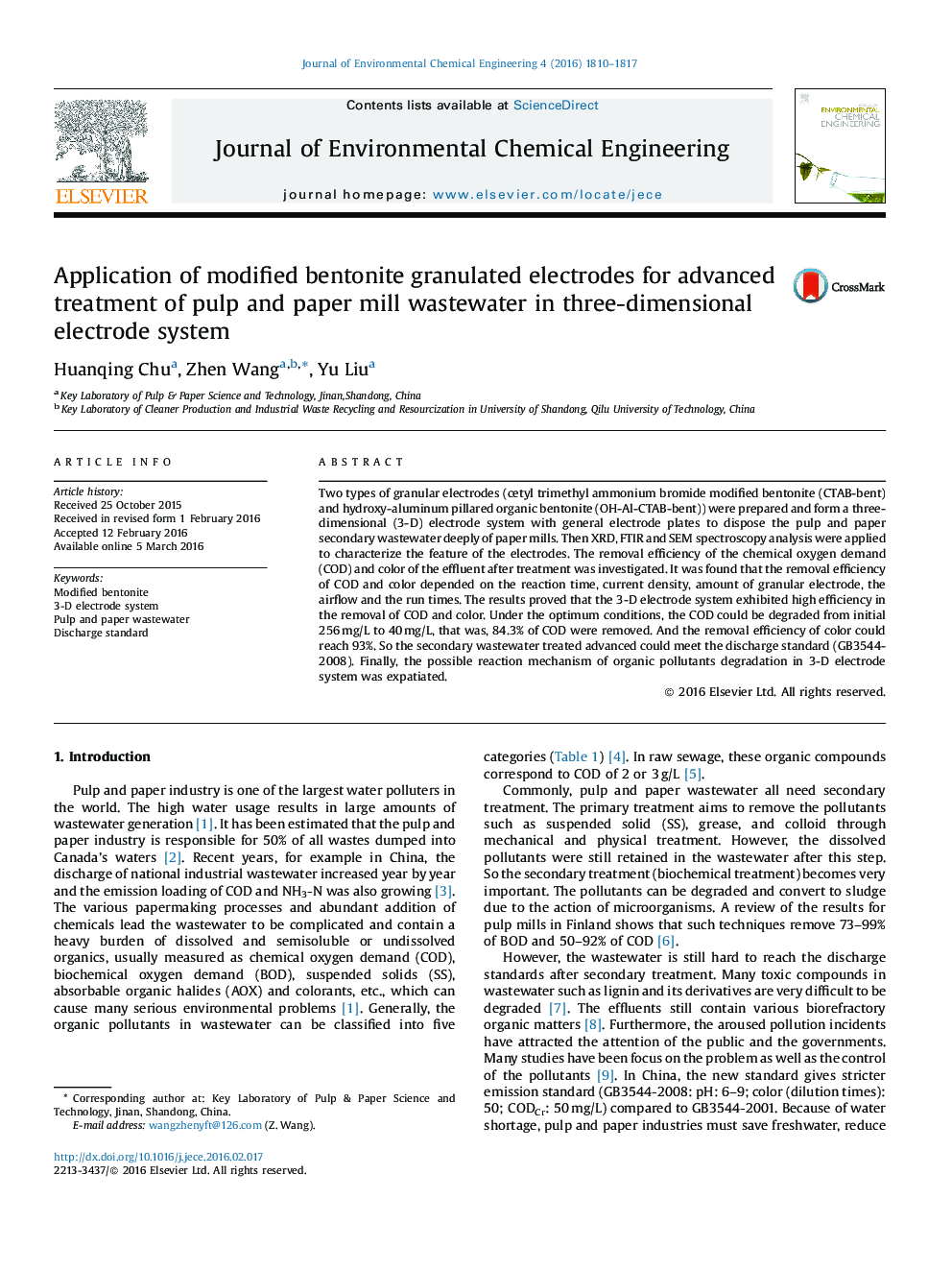| Article ID | Journal | Published Year | Pages | File Type |
|---|---|---|---|---|
| 221661 | Journal of Environmental Chemical Engineering | 2016 | 8 Pages |
Two types of granular electrodes (cetyl trimethyl ammonium bromide modified bentonite (CTAB-bent) and hydroxy-aluminum pillared organic bentonite (OH-Al-CTAB-bent)) were prepared and form a three-dimensional (3-D) electrode system with general electrode plates to dispose the pulp and paper secondary wastewater deeply of paper mills. Then XRD, FTIR and SEM spectroscopy analysis were applied to characterize the feature of the electrodes. The removal efficiency of the chemical oxygen demand (COD) and color of the effluent after treatment was investigated. It was found that the removal efficiency of COD and color depended on the reaction time, current density, amount of granular electrode, the airflow and the run times. The results proved that the 3-D electrode system exhibited high efficiency in the removal of COD and color. Under the optimum conditions, the COD could be degraded from initial 256 mg/L to 40 mg/L, that was, 84.3% of COD were removed. And the removal efficiency of color could reach 93%. So the secondary wastewater treated advanced could meet the discharge standard (GB3544-2008). Finally, the possible reaction mechanism of organic pollutants degradation in 3-D electrode system was expatiated.
